

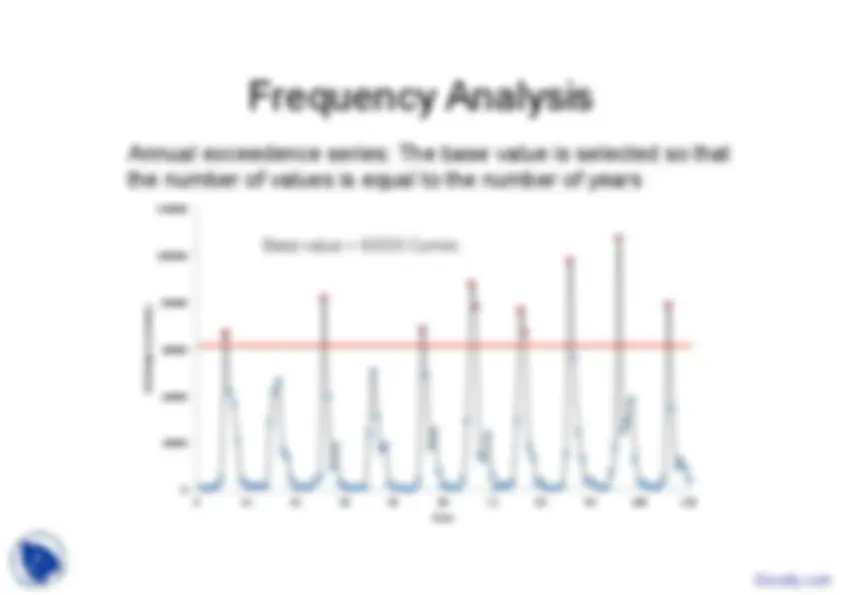
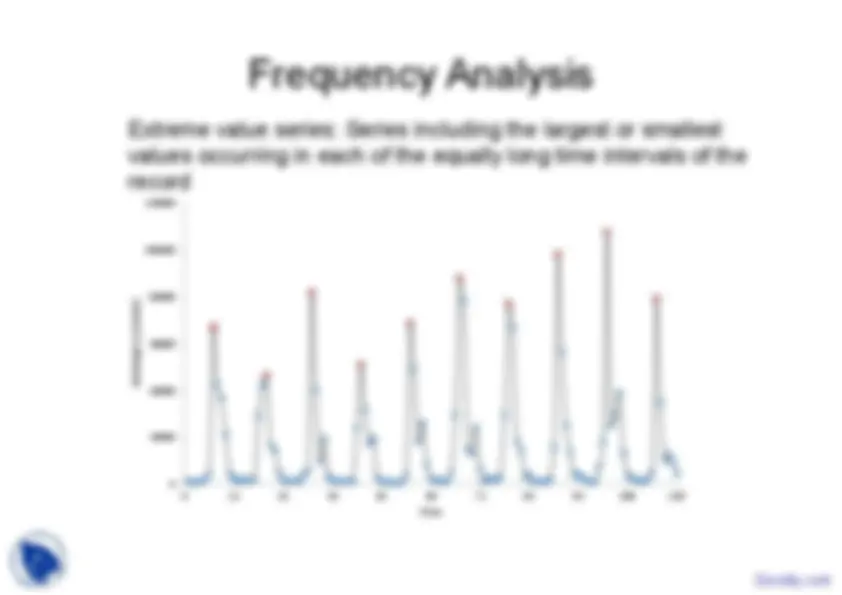
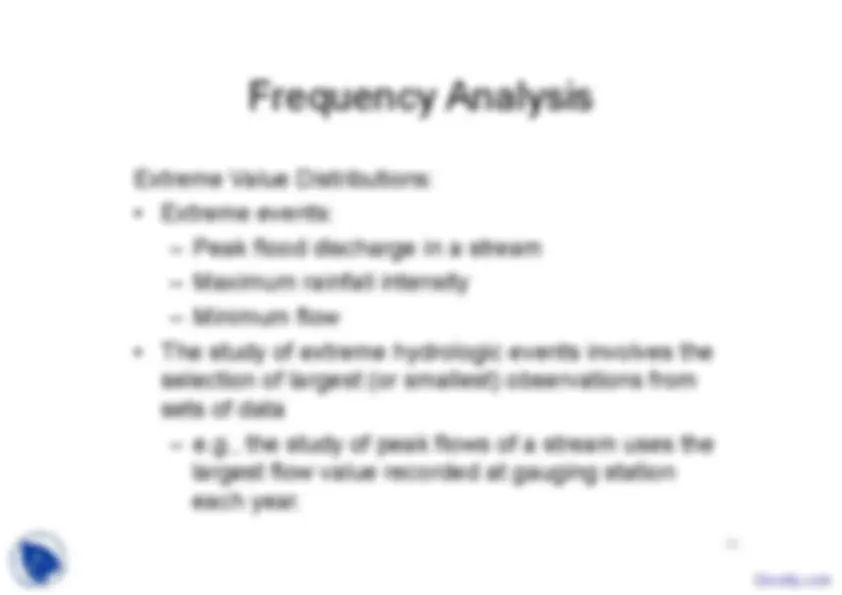
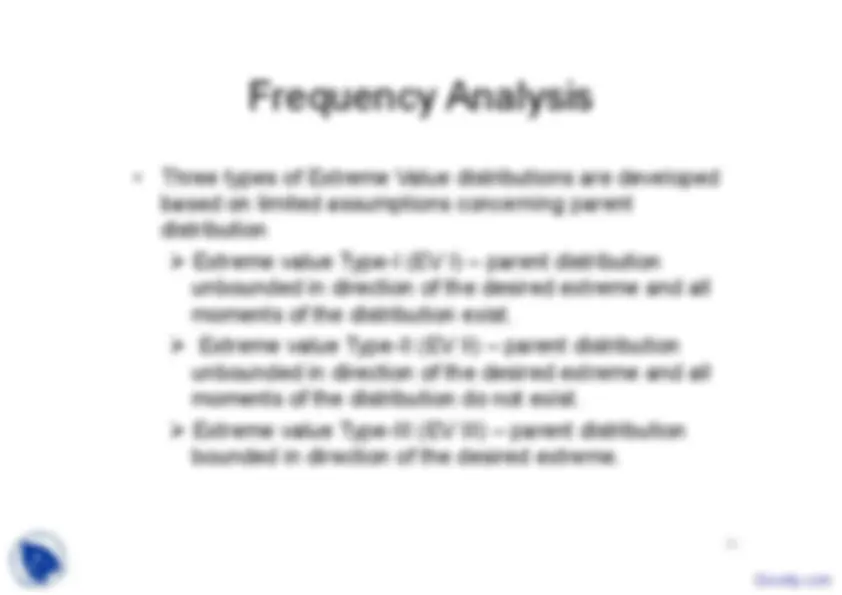
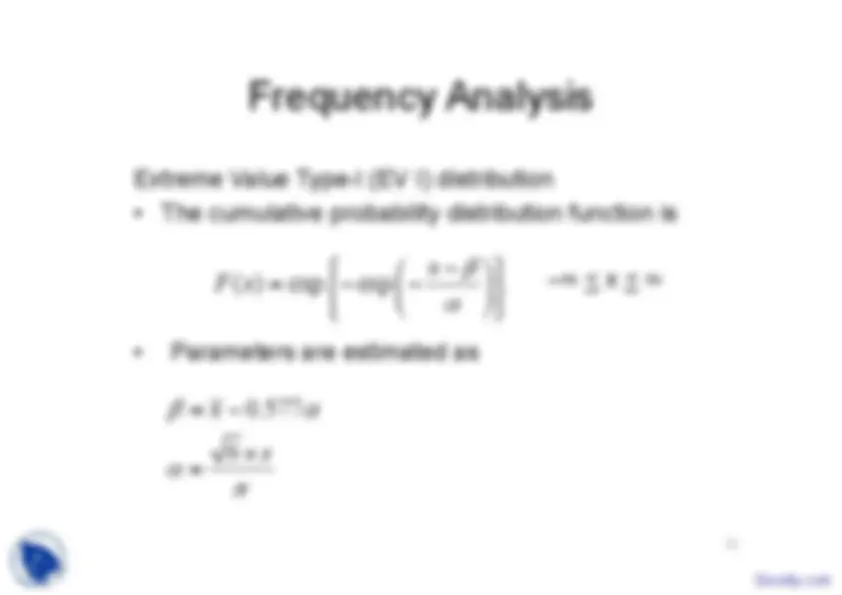
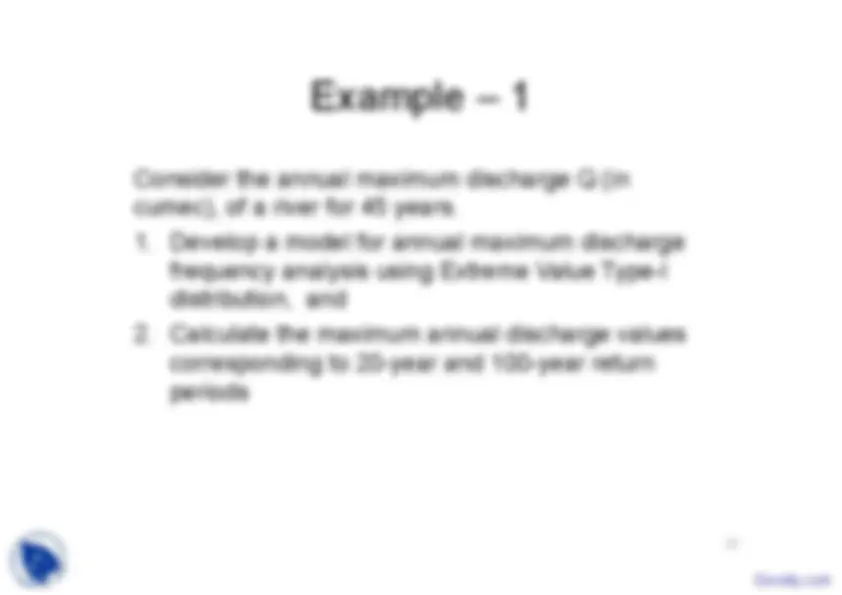
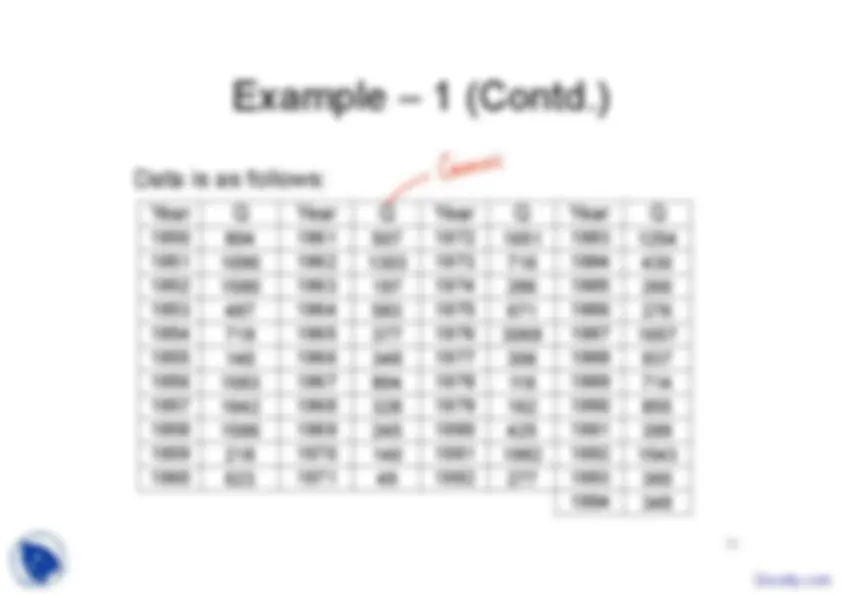
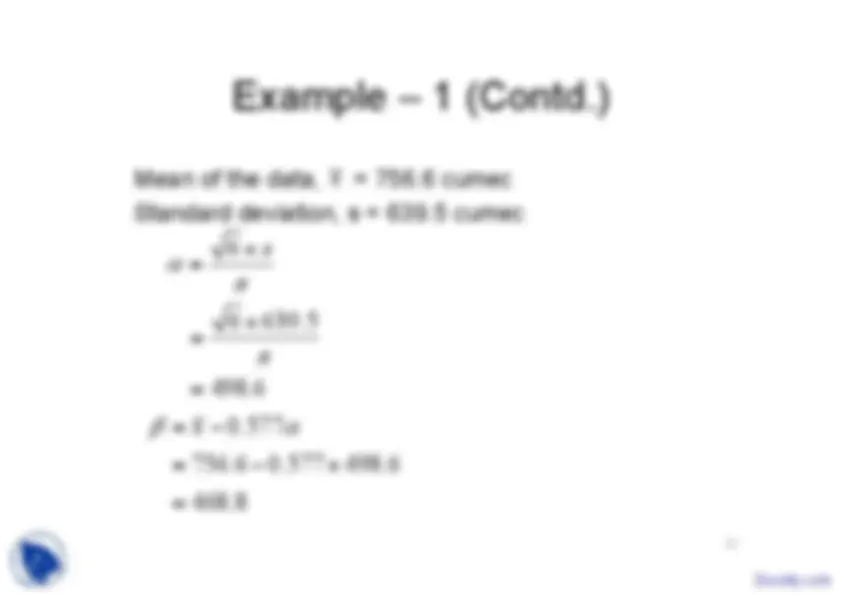

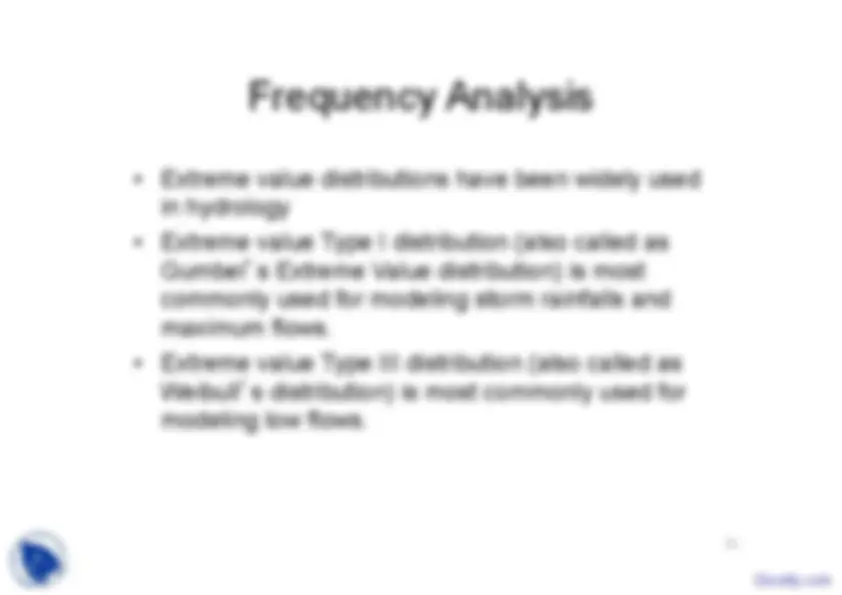
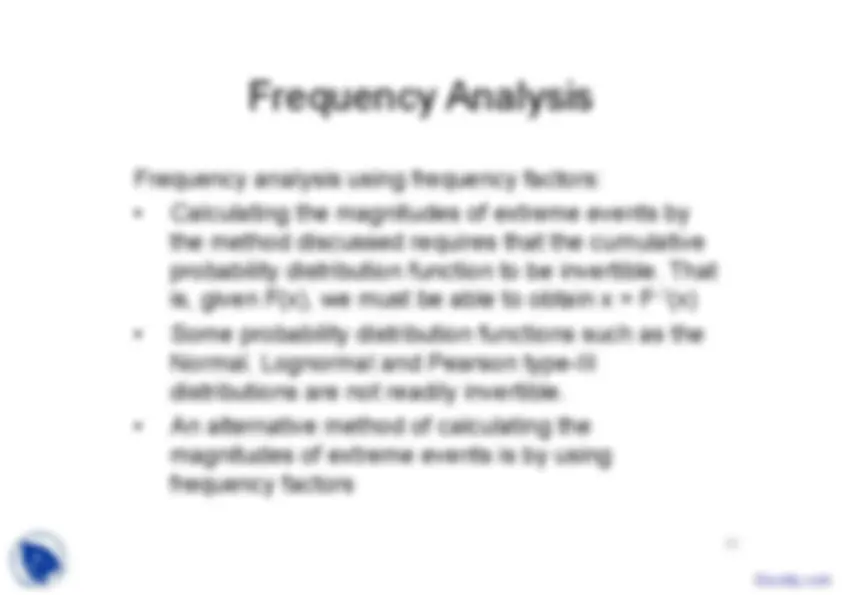
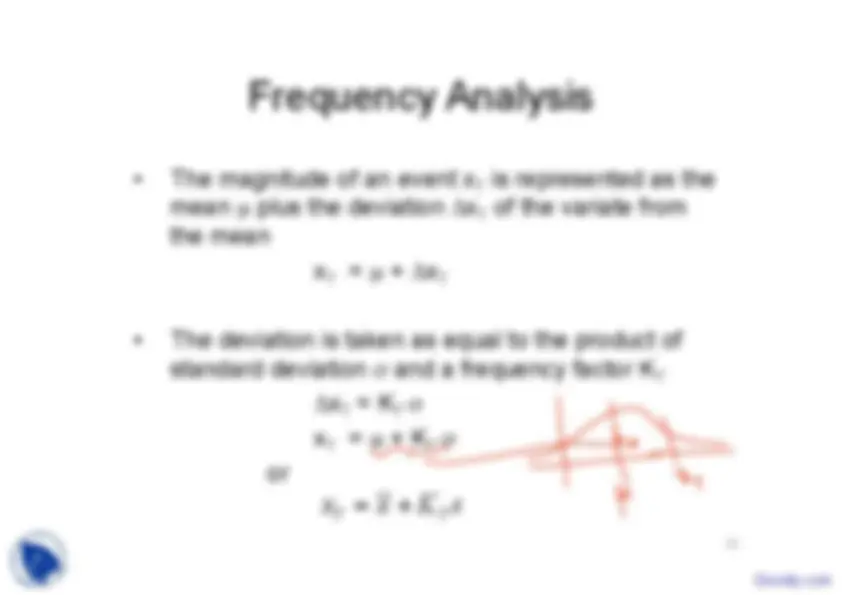
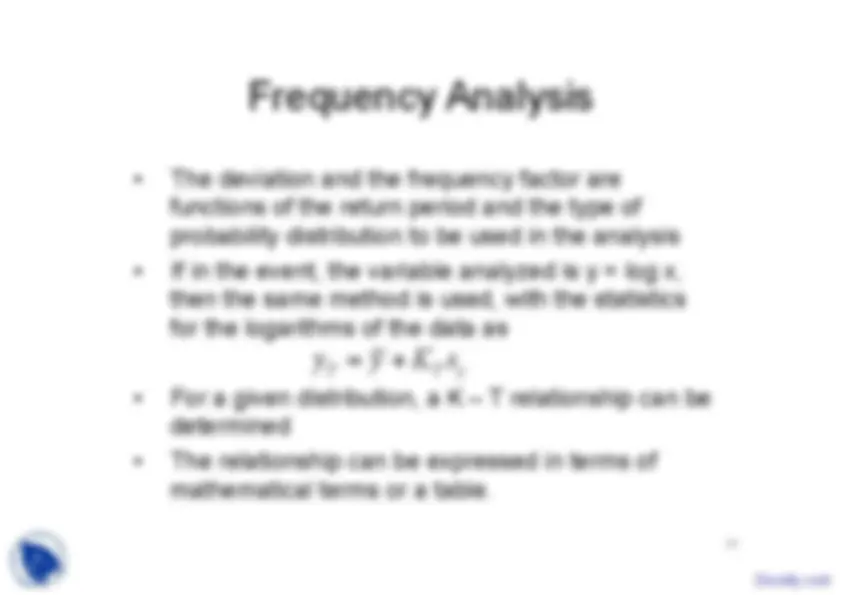
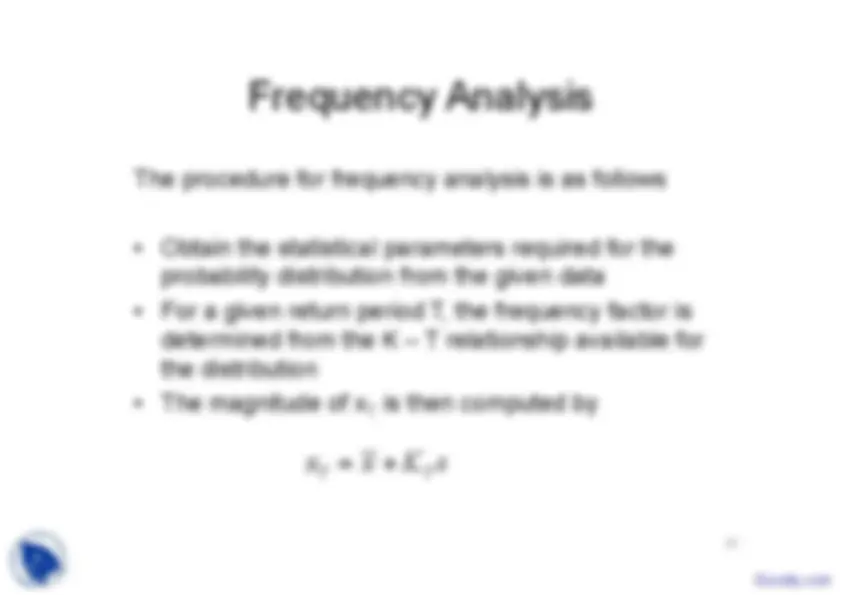
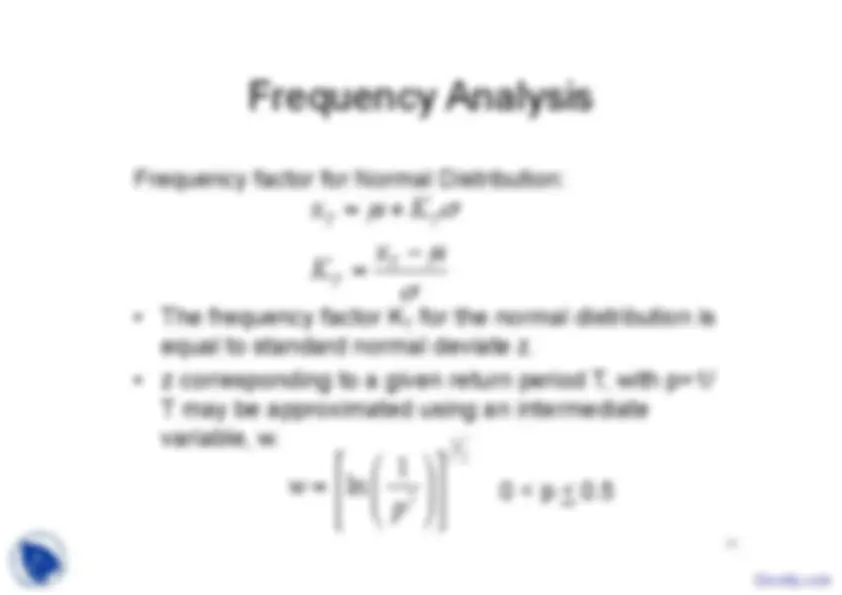
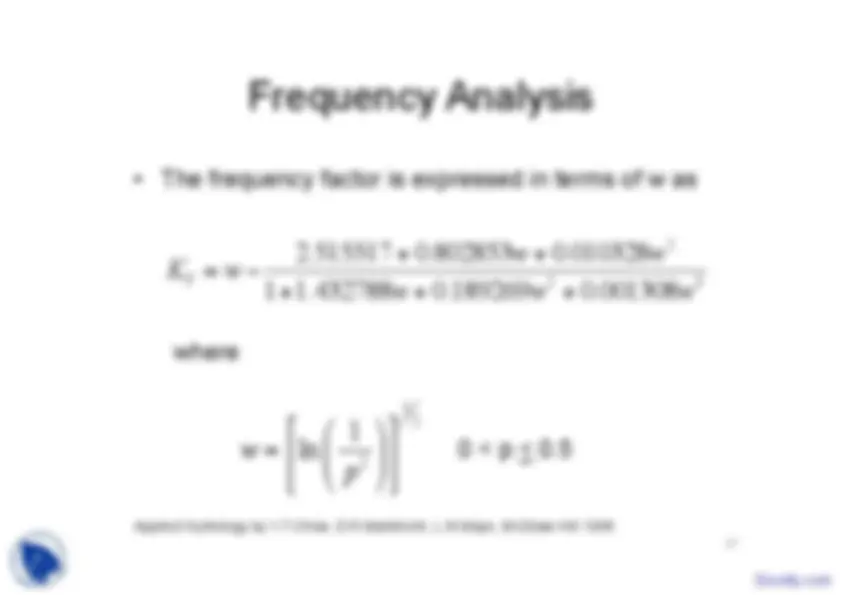
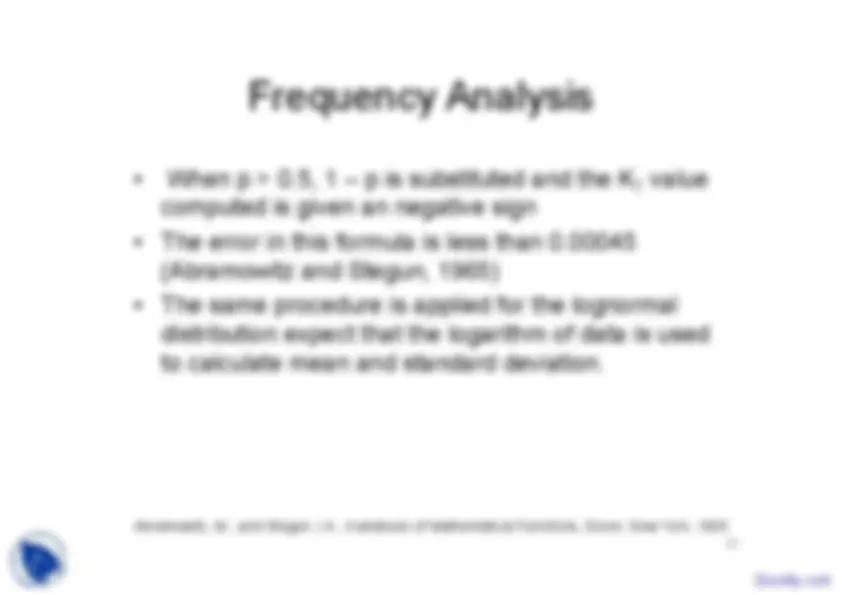
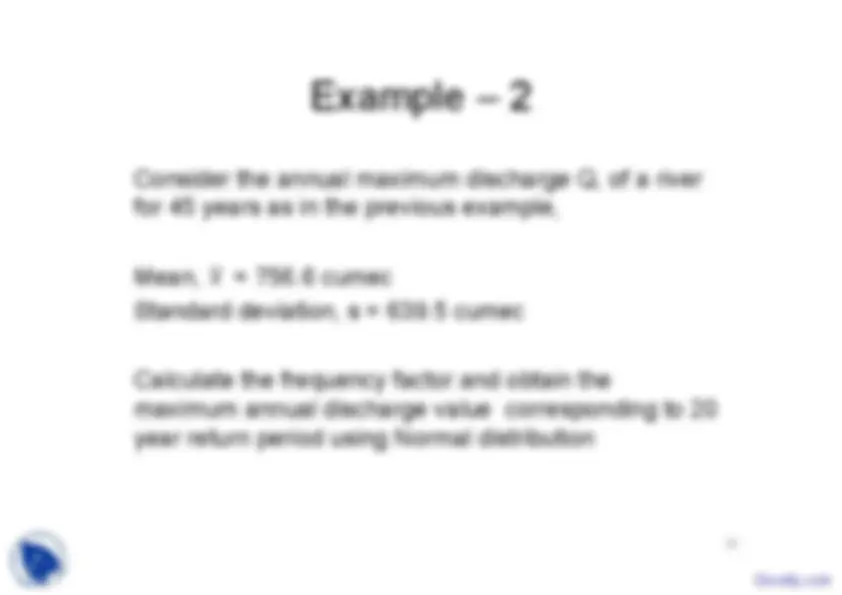
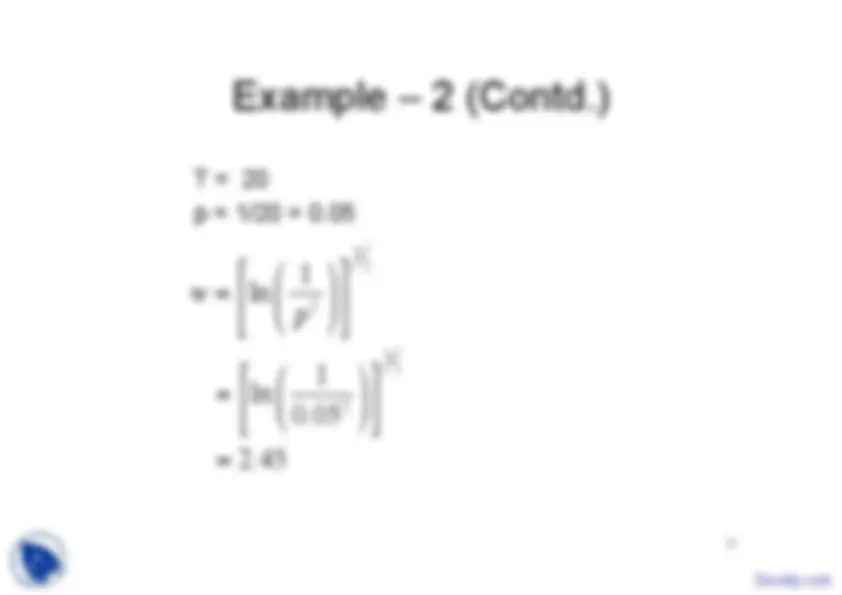
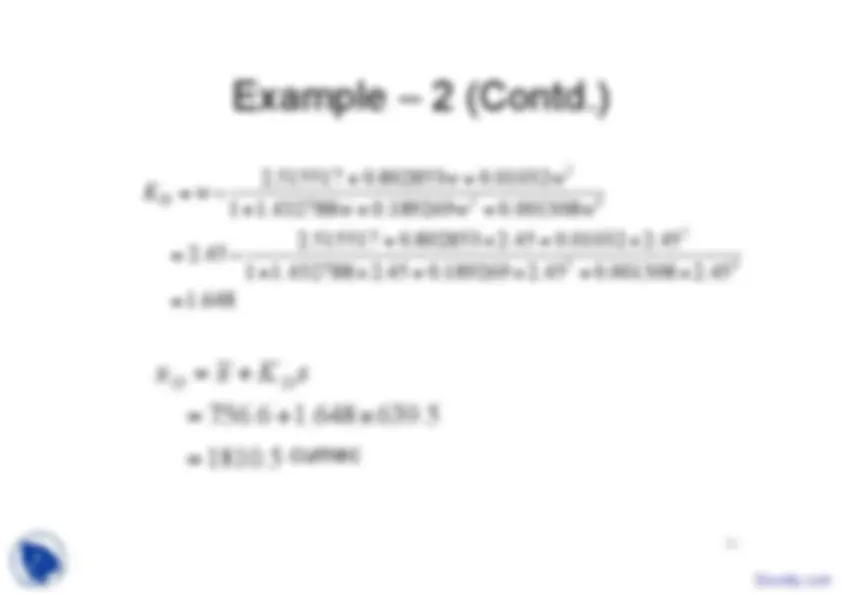
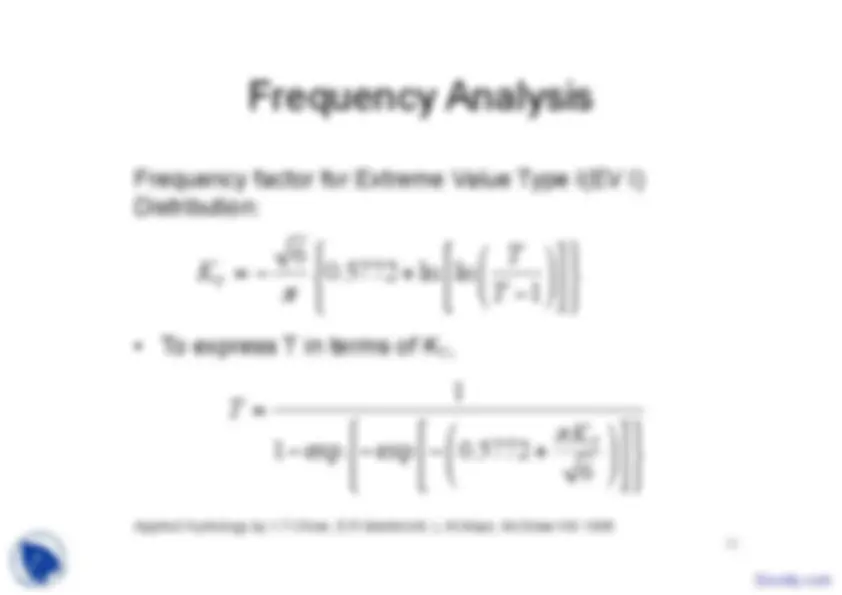
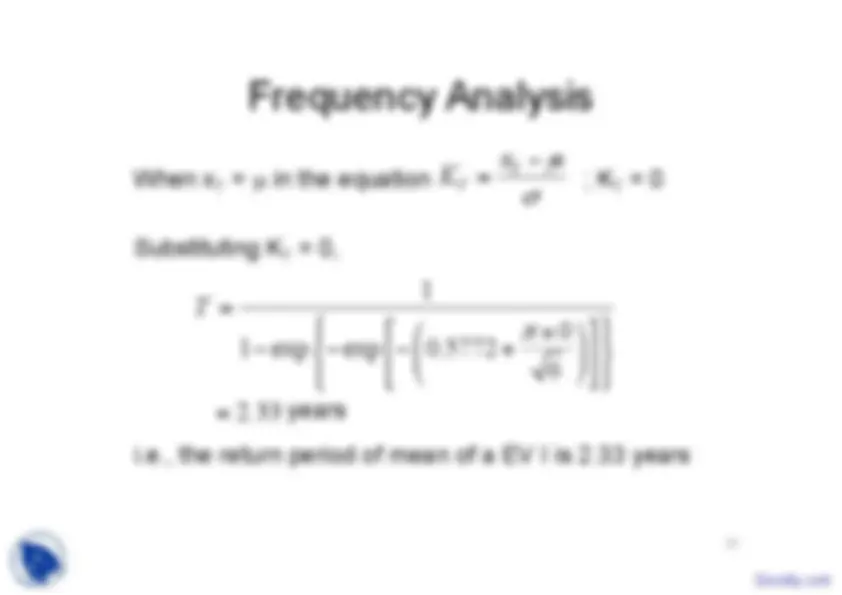
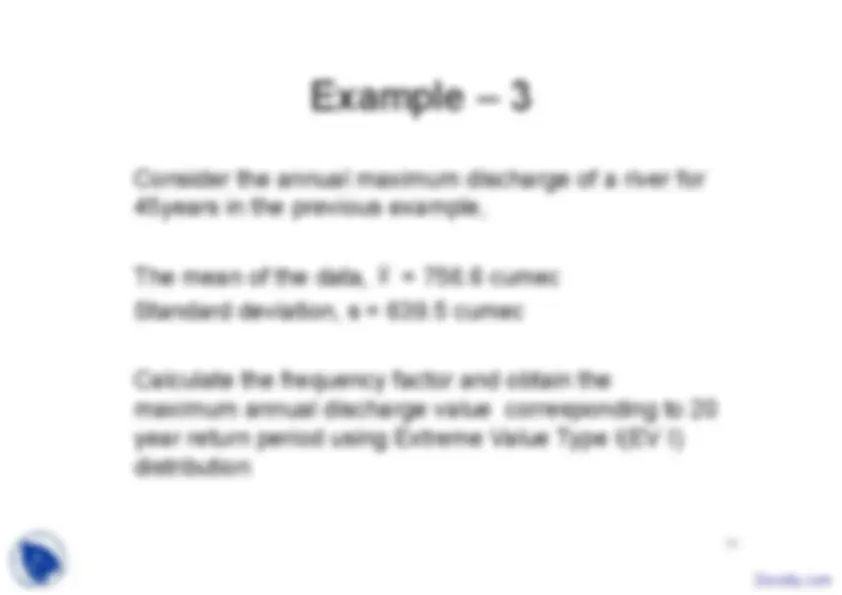
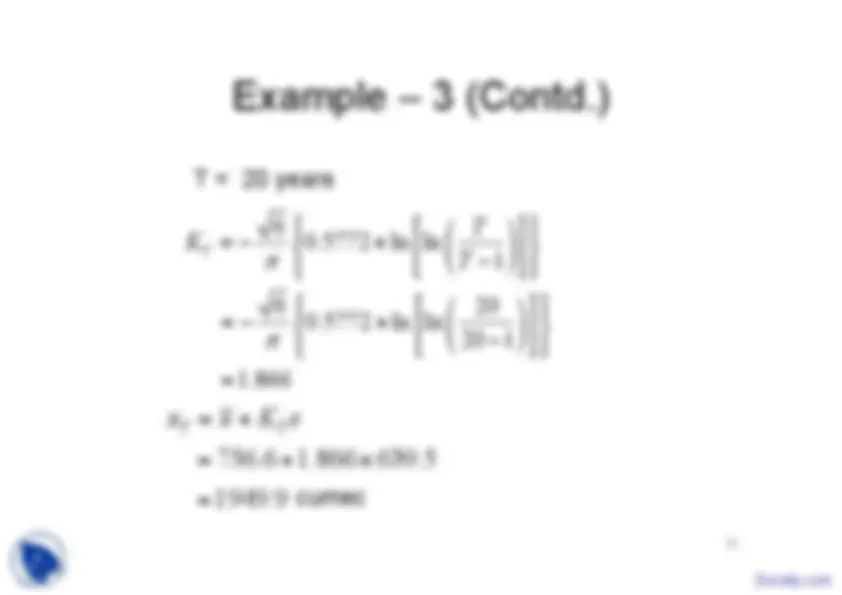
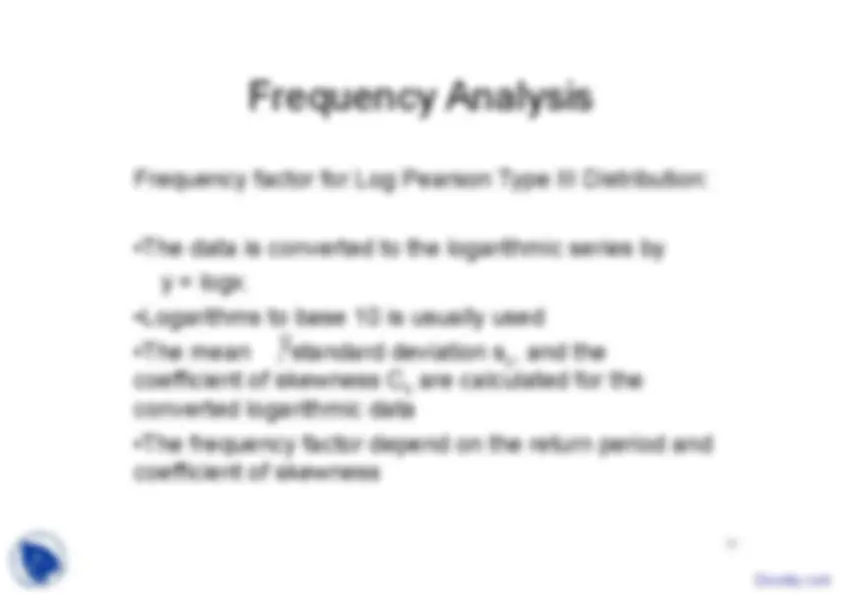
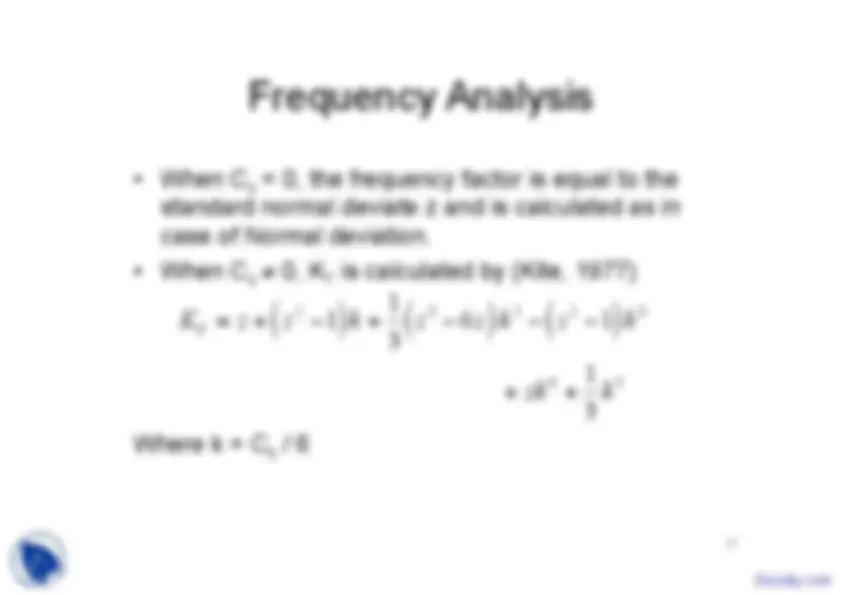
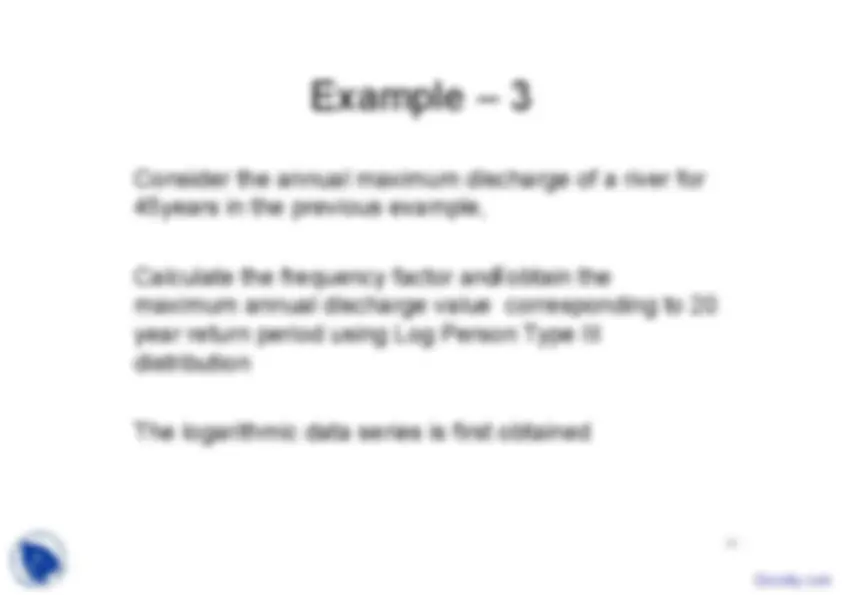
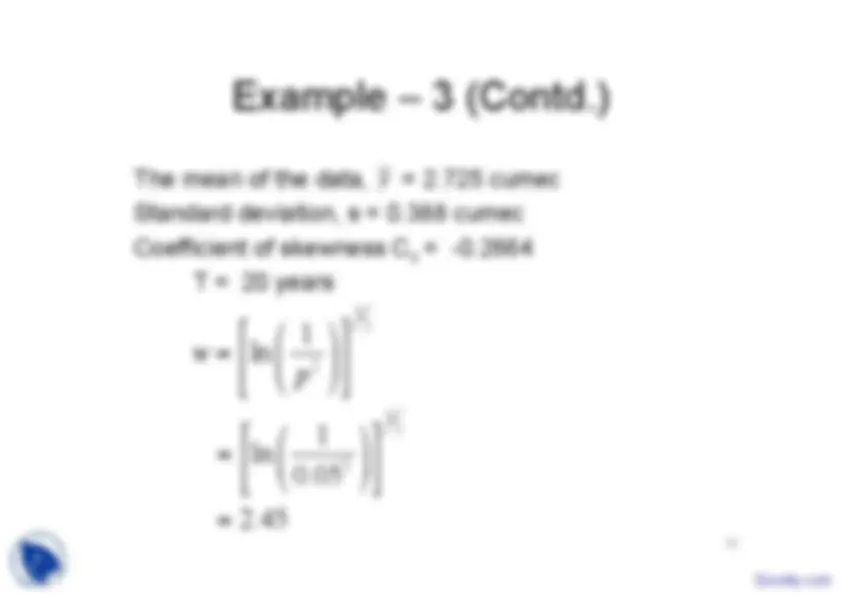
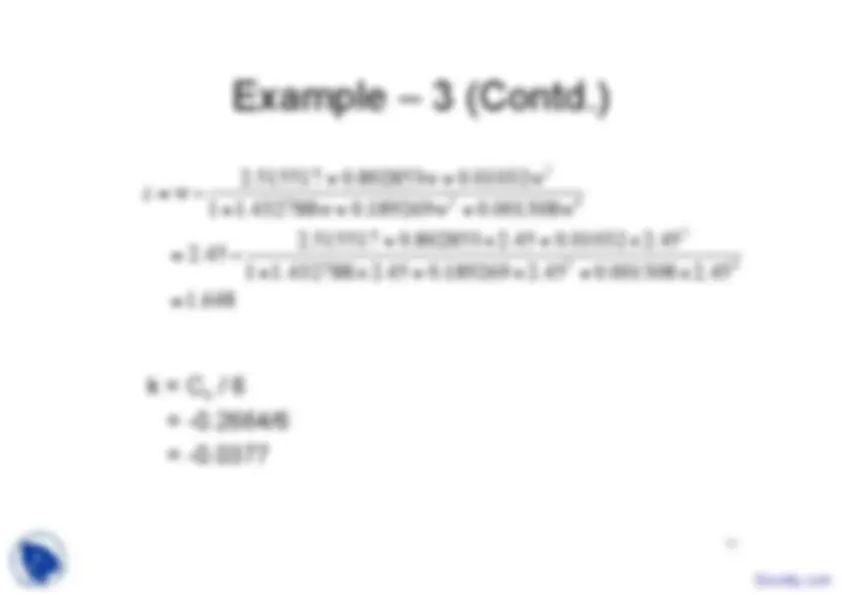
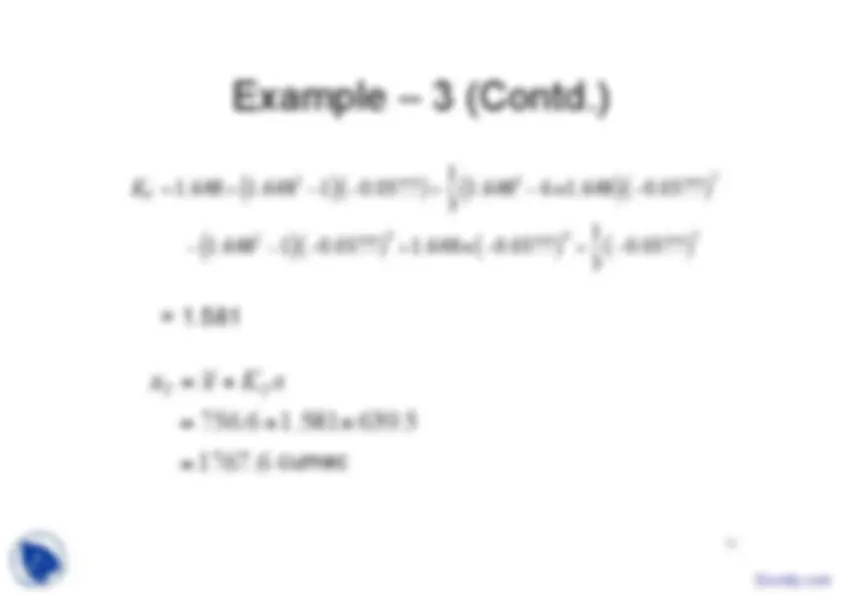

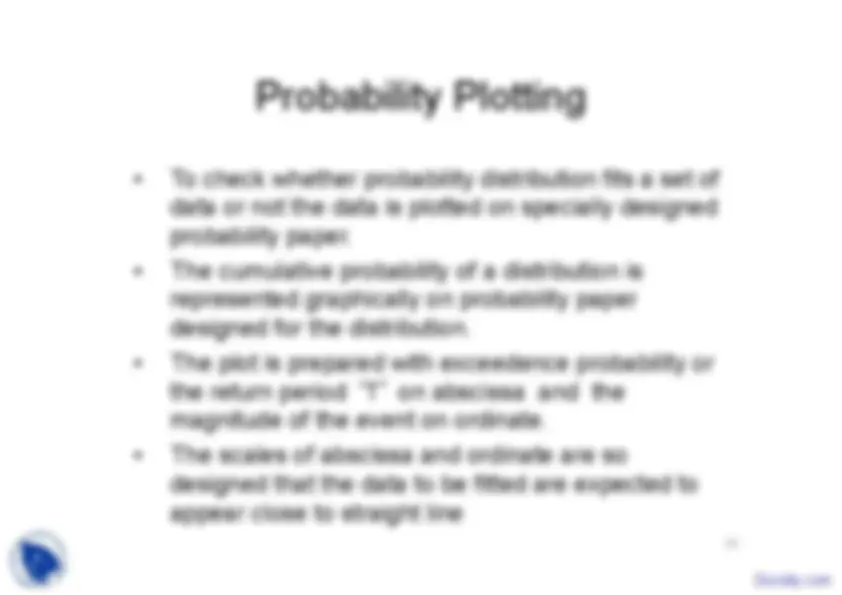
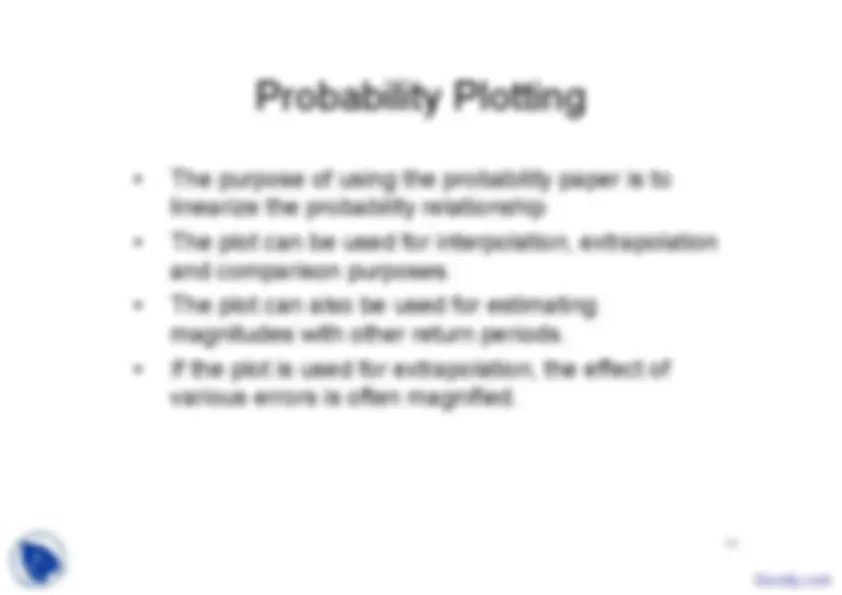
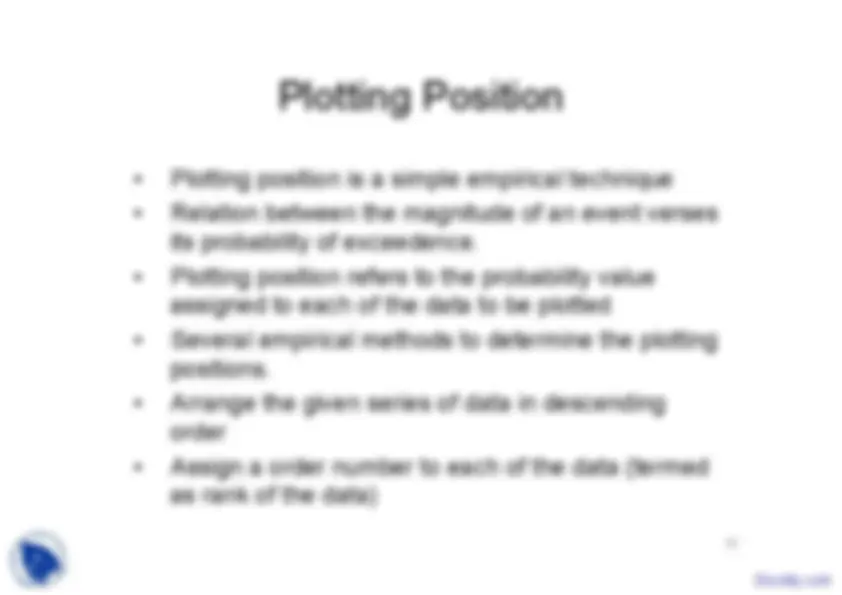
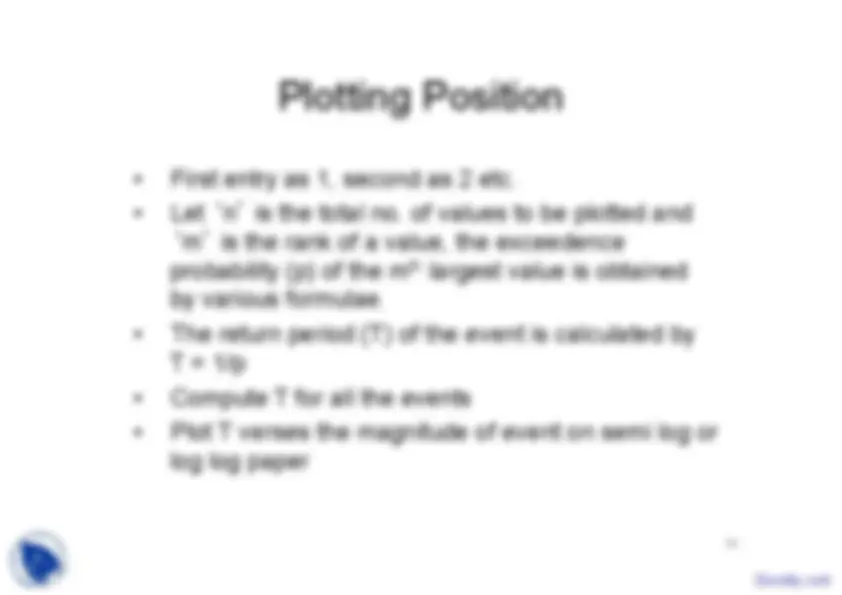
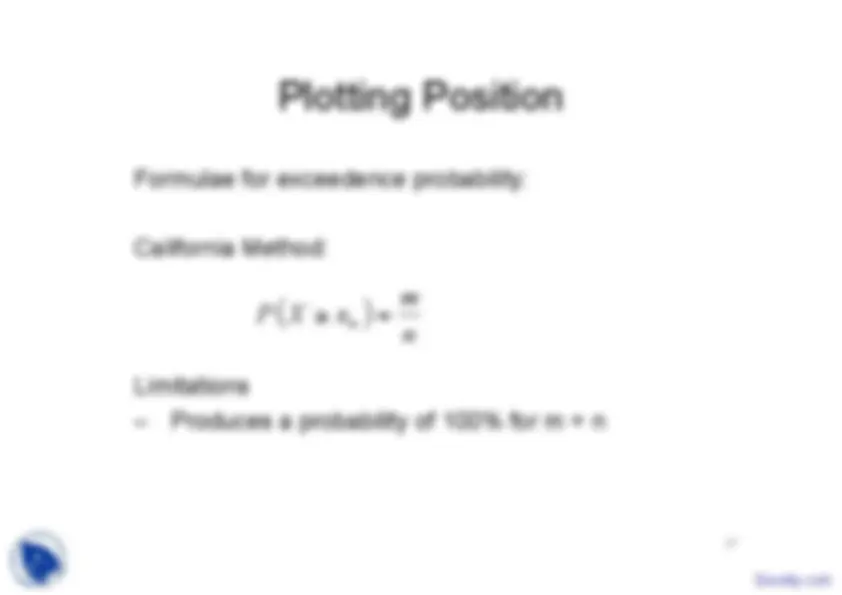
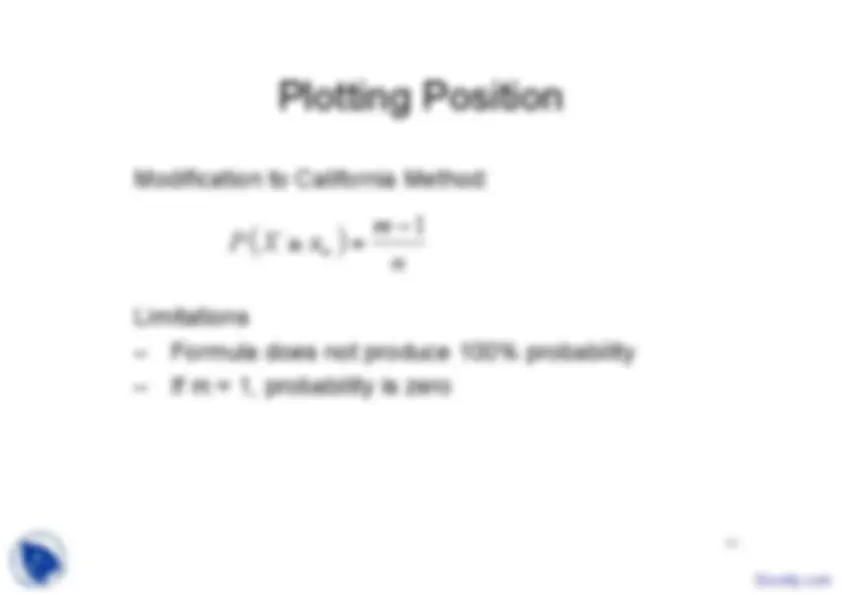
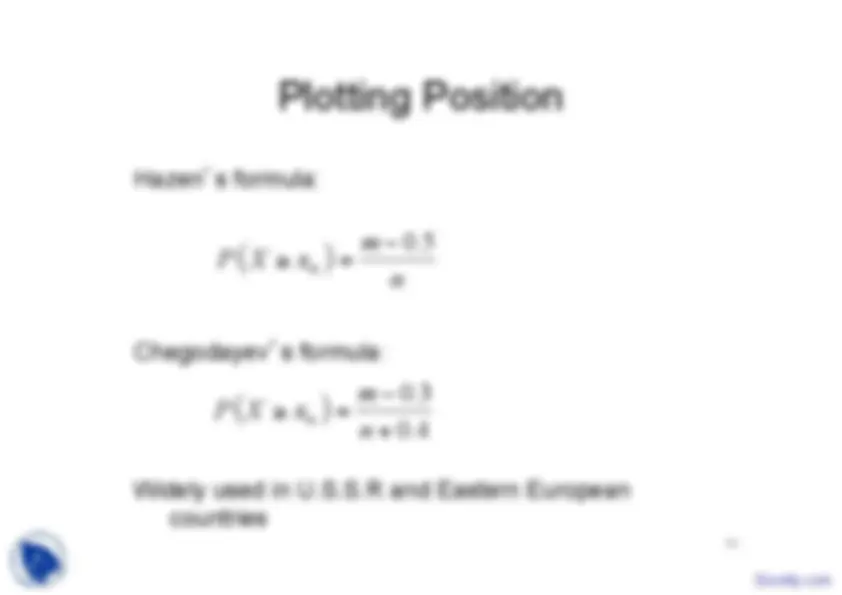
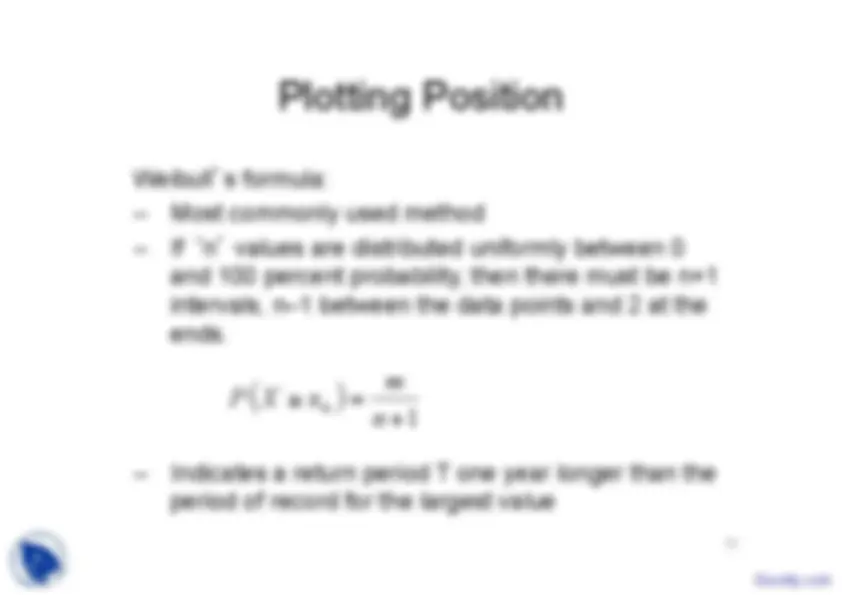
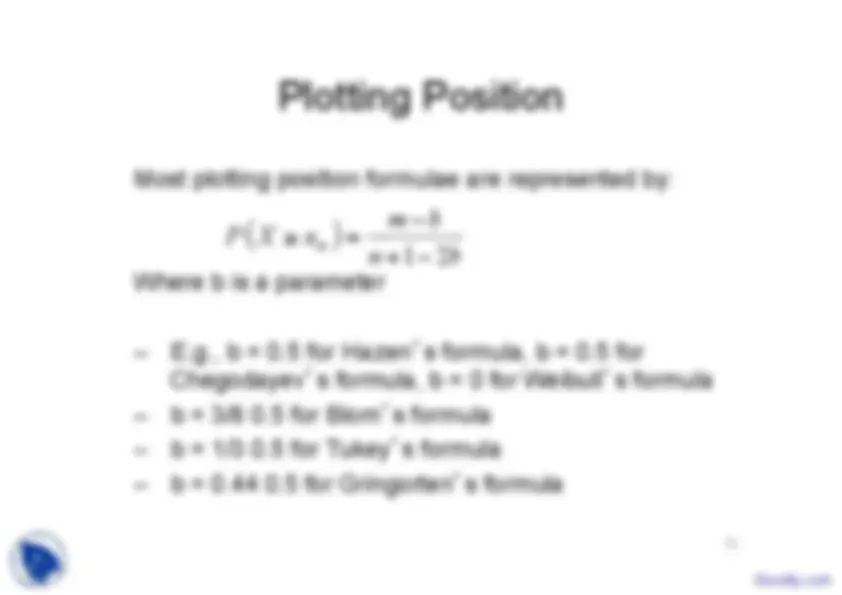
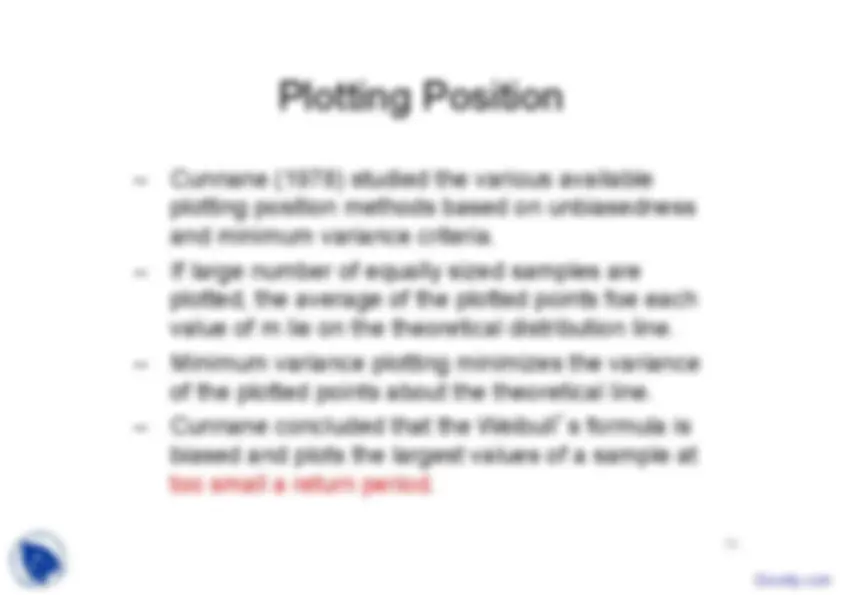
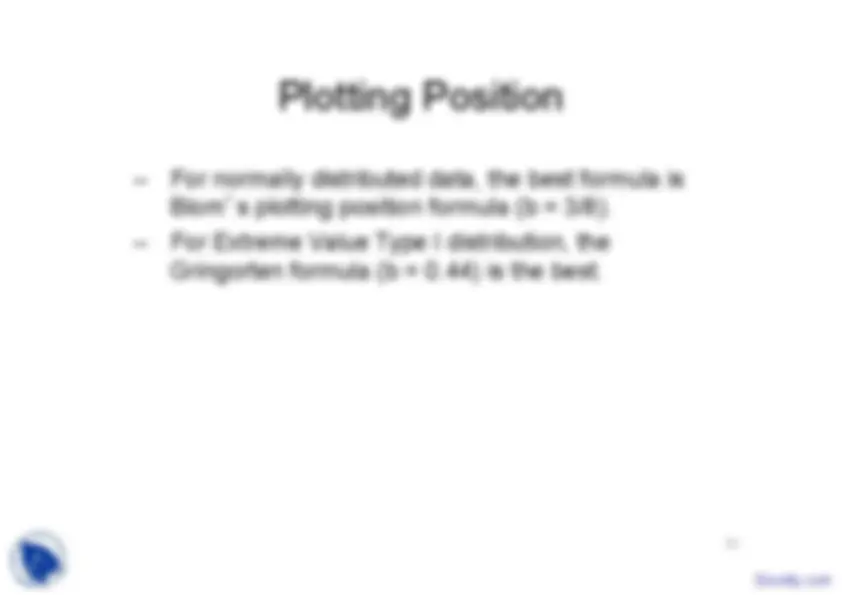
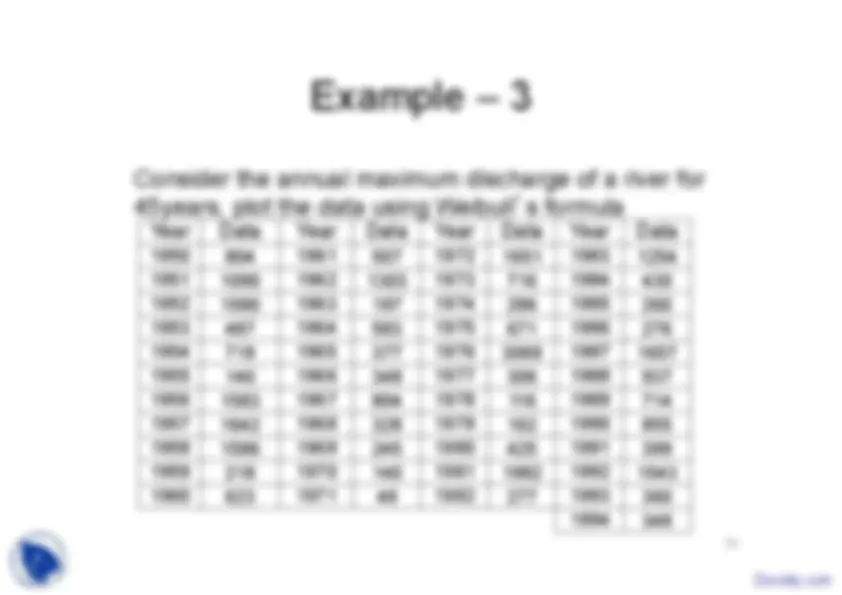
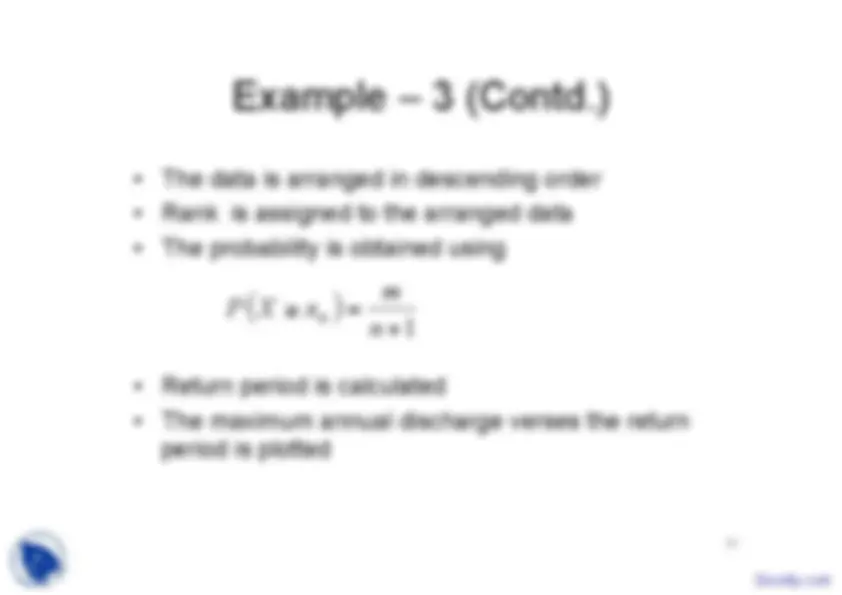
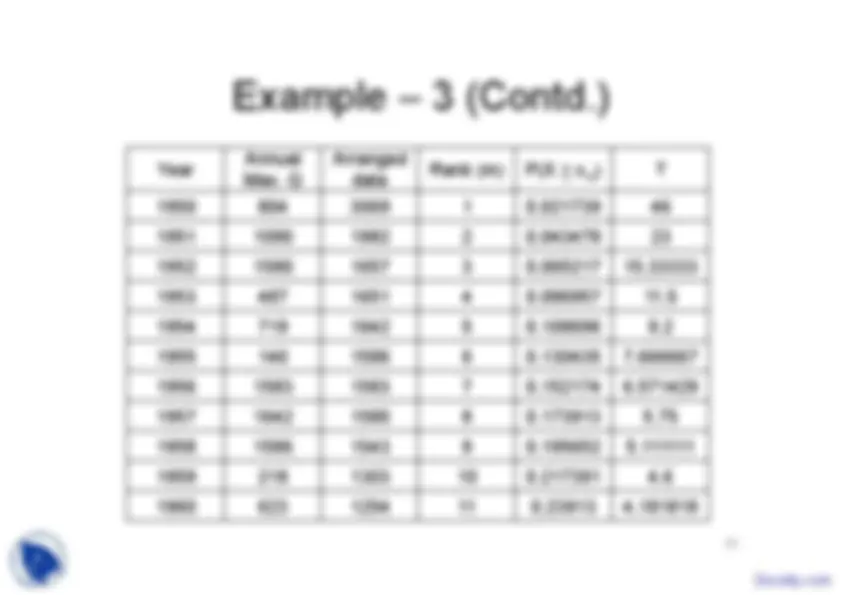
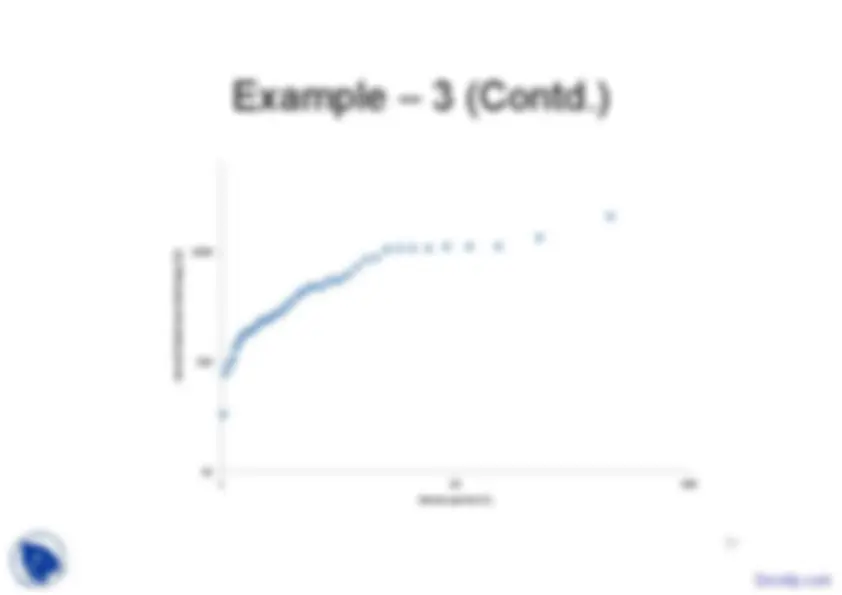


Study with the several resources on Docsity

Earn points by helping other students or get them with a premium plan


Prepare for your exams
Study with the several resources on Docsity

Earn points to download
Earn points by helping other students or get them with a premium plan
Community
Ask the community for help and clear up your study doubts
Discover the best universities in your country according to Docsity users
Free resources
Download our free guides on studying techniques, anxiety management strategies, and thesis advice from Docsity tutors
The main points i the stochastic hydrology are listed below:Partial Duration Series, Frequency Analysis, Hydrologic Data Series, Annual Exceedence Series, Extreme Value Distributions, Minimum Flow, Peak Flood Discharge, Parent Distribution, Cumulative Probability Distribution
Typology: Study notes
1 / 55

This page cannot be seen from the preview
Don't miss anything!
















































Hydrologic data series:
the available data.
selected so that their magnitude is greater than a
predefined base value.
selected so that the number of values is equal to
the number of years.
or smallest values occurring in each of the equally
long time intervals of the record.
3
0
20000
40000
60000
80000
100000
120000
0 12 24 36 48 60 72 84 96 108 120
Discharge Q, (
Cumec
)
Time
Complete duration series: A series containing all the
available data
0
20000
40000
60000
80000
100000
120000
0 12 24 36 48 60 72 84 96 108 120
Discharge Q, (
Cumec
)
Time
Annual exceedence series: The base value is selected so that
the number of values is equal to the number of years
Base value = 60000 Cumec
0
20000
40000
60000
80000
100000
120000
0 12 24 36 48 60 72 84 96 108 120
Discharge Q, (
Cumec
)
Time
Extreme value series: Series including the largest or smallest
values occurring in each of the equally long time intervals of the
record
verify that all the observations are independent
saturated soil conditions produced during another
large flood occurring a short time earlier
from the two approaches become similar as the
chance that two such events will occur within any
year is very small.
9
Extreme Value Distributions:
selection of largest (or smallest) observations from
sets of data
largest flow value recorded at gauging station
each year.
10
Extreme Value Type-I (EV I) distribution
12
( ) exp exp
x
F x
6 s
13
( ) { }
( )
y ln ln
F y
Consider the annual maximum discharge Q (in
cumec), of a river for 45 years.
frequency analysis using Extreme Value Type-I
distribution, and
corresponding to 20-year and 100-year return
periods
15
Data is as follows:
16
Year Q Year Q Year Q Year Q
1950 804 1961 507 1972 1651 1983 1254
1951 1090 1962 1303 1973 716 1984 430
1952 1580 1963 197 1974 286 1985 260
1953 487 1964 583 1975 671 1986 276
1954 719 1965 377 1976 3069 1987 1657
1955 140 1966 348 1977 306 1988 937
1956 1583 1967 804 1978 116 1989 714
1957 1642 1968 328 1979 162 1990 855
1958 1586 1969 245 1980 425 1991 399
1959 218 1970 140 1981 1982 1992 1543
1960 623 1971 49 1982 277 1993 360
1994 348
The probability model is
To determine the x
T
value for a particular return period,
the reduced variate y is initially calculated for that
particular return period using
18
( ) exp exp
x
F x P X x
ln ln
y
For T = 20 years,
x
20
= β + α y
20
= 468.8 + 498.6 * 2.
= 1950 cumec
19
20
ln ln
y
Y = (X – β)/ α
in hydrology
Gumbel s Extreme Value distribution) is most
commonly used for modeling storm rainfalls and
maximum flows.
Weibull s distribution) is most commonly used for
modeling low flows.
21
Frequency analysis using frequency factors:
the method discussed requires that the cumulative
probability distribution function to be invertible. That
is, given F(x), we must be able to obtain x = F
(x)
Normal. Lognormal and Pearson type-III
distributions are not readily invertible.
magnitudes of extreme events is by using
frequency factors
22